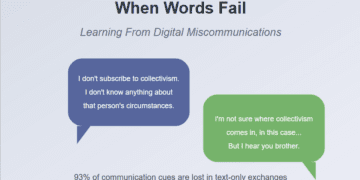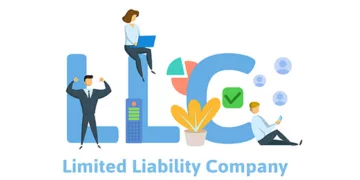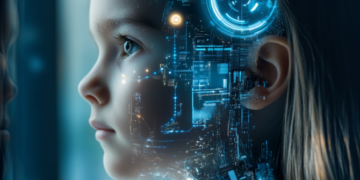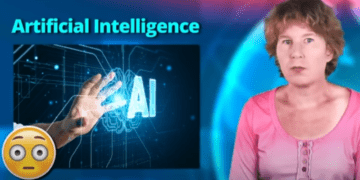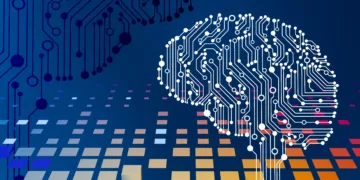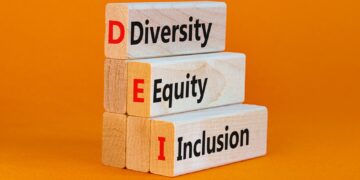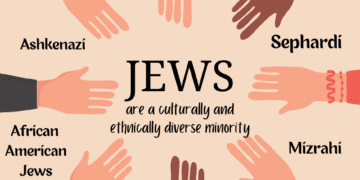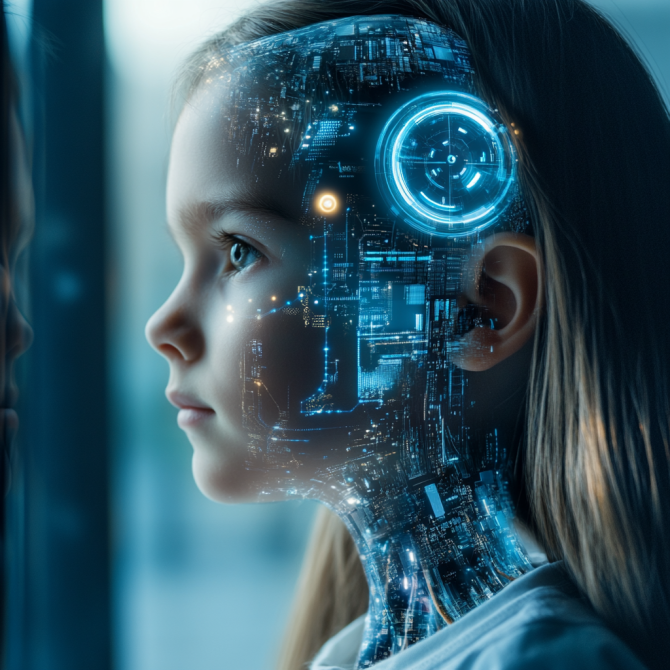As a parent helping my son with his research assignment on Artificial Intelligence (AI), I found myself diving deep into a fascinating world that’s reshaping our future. What started as a simple homework help session turned into an eye-opening exploration of technology that’s both promising and challenging. Let’s embark on this journey together to understand AI’s impact on education and beyond.
Understanding the Foundations of Artificial Intelligence
Artificial Intelligence represents computer systems designed to mimic human intelligence and perform tasks that typically require human cognition. These systems can analyze data, recognize patterns, learn from experience, and make decisions – much like our own brains, but with distinct differences.
“Artificial Intelligence is the science of making machines smart – machines that can solve problems the way humans do.” – Sebastian Thrun, Founder of Udacity
The Inner Workings of AI Systems
To understand how AI works, imagine teaching a child to recognize cats. You show them many pictures of cats, point out distinctive features like whiskers and pointed ears, and eventually, they learn to identify cats on their own. AI learns similarly through a process called machine learning:
- Data Input: The system receives large amounts of information
- Pattern Recognition: It identifies recurring patterns in the data
- Algorithm Development: It creates rules based on these patterns
- Decision Making: It applies these rules to new situations
- Feedback Loop: It learns from successes and failures to improve
Here’s a simplified visualization of the AI learning process:
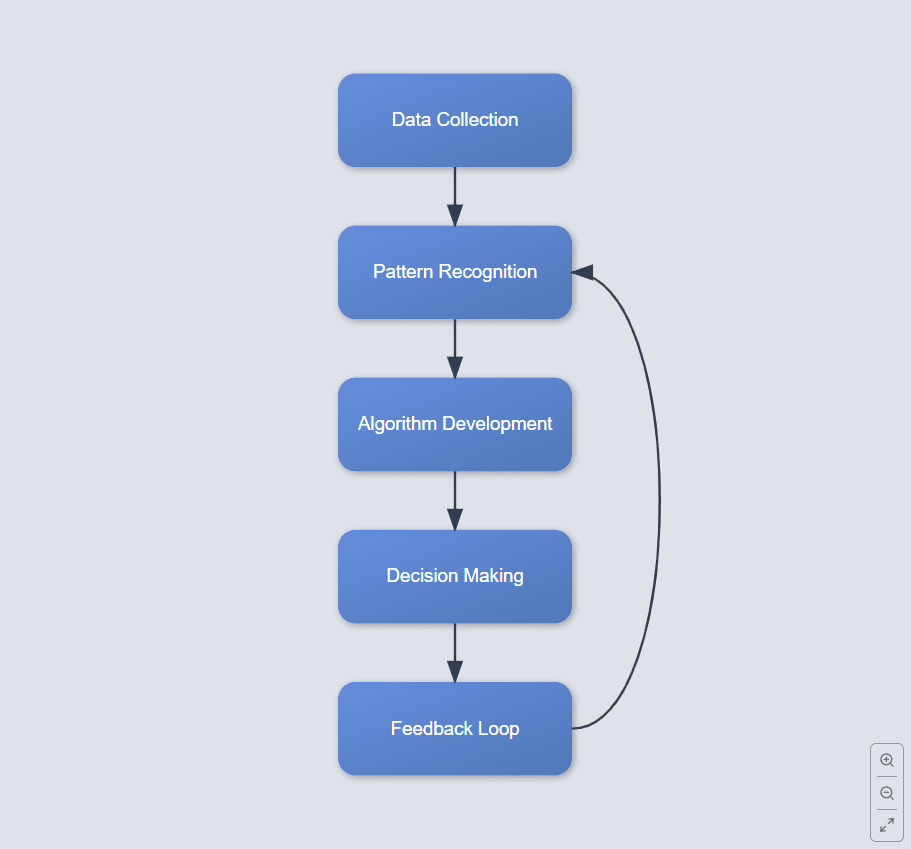
The Historical Journey of Artificial Intelligence
The concept of artificial intelligence wasn’t born in recent decades – it has a rich history dating back to the 1950s. Alan Turing, often considered the father of theoretical computer science and artificial intelligence, laid the groundwork through his famous Turing Test in 1950.
Here’s a timeline of key AI developments:
| Year | Milestone | Impact |
|---|---|---|
| 1950 | Turing Test Proposed | Established framework for measuring machine intelligence |
| 1956 | Dartmouth Conference | Term “Artificial Intelligence” coined |
| 1964 | ELIZA Created | First chatbot demonstrating natural language processing |
| 1997 | Deep Blue Beats Kasparov | AI proves capability in strategic thinking |
| 2011 | IBM Watson Wins Jeopardy | Natural language processing breakthrough |
| 2012 | Deep Learning Revolution | Major advances in neural networks |
| 2022 | ChatGPT Launch | Mainstream adoption of conversational AI |
AI in Education: Safety, Sources, and Student Readiness
One of the most pressing questions for parents and educators is whether AI is safe for students to use. The answer isn’t simply yes or no – it requires understanding how AI systems access and process information.
Information Sources and Verification
Modern AI systems like GPT models are trained on vast amounts of internet data, including:
- Academic publications
- Educational resources
- Books and articles
- Websites and forums
- Government documents
However, it’s crucial to understand that AI doesn’t actively search the internet or update in real-time. Instead, it works with the information it was trained on, which has a specific cutoff date.
Benefits and Risks Across Different Fields
Education Sector
Benefits:
- Personalized learning paths
- Immediate feedback on assignments
- 24/7 availability for questions
- Adaptive testing systems
- Support for different learning styles
Risks:
- Over-reliance on AI assistance
- Potential for academic dishonesty
- Reduced critical thinking if used improperly
- Privacy concerns with student data
- Digital divide issues
Healthcare Applications
Benefits:
- Early disease detection
- Personalized treatment plans
- Drug discovery acceleration
- Medical image analysis
- Patient monitoring systems
Risks:
- Data privacy concerns
- Over-reliance on AI diagnostics
- Integration challenges
- High implementation costs
- Training requirements for staff
Ensuring Responsible AI Usage
Guidelines for Parents and Teachers
- Set Clear Boundaries
- Establish when AI use is appropriate
- Define citation requirements
- Create guidelines for collaboration
- Teach Critical Thinking
- Encourage fact-checking
- Promote independent research
- Develop verification skills
- Monitor and Guide
- Regular review of AI interactions
- Open discussions about AI usage
- Feedback on appropriate use
Current Limitations of AI Systems
Understanding AI’s limitations is crucial for responsible use:
- Lack of True Understanding
- AI processes patterns but doesn’t truly comprehend
- Cannot form genuine opinions or emotions
- May generate plausible but incorrect information
- Training Data Limitations
- Knowledge cutoff dates
- Potential biases in training data
- Geographic or cultural gaps
- Technical Constraints
- Limited context window
- No real-time learning
- Cannot verify accuracy independently
Supporting Rather Than Replacing Human Thinking
To ensure AI enhances rather than diminishes learning:
Strategies for Educational Integration
- Use AI as a Starting Point
- Begin research with AI assistance
- Verify information from multiple sources
- Develop original insights
- Implement the “AI Plus Human” Approach
- AI for initial ideas and organization
- Human creativity and critical thinking
- Personal experience and reflection
- Focus on Higher-Order Skills
- Analysis and evaluation
- Creative problem-solving
- Ethical decision-making
Preparing Students for Responsible AI Use
Assessment of Student Readiness
Students’ readiness to use AI responsibly depends on several factors:
- Digital Literacy
- Understanding of technology
- Information verification skills
- Online safety awareness
- Critical Thinking Abilities
- Fact-checking habits
- Source evaluation
- Logical reasoning
- Ethical Understanding
- Academic integrity
- Proper attribution
- Responsible use guidelines
Looking Ahead: The Future of AI in Education
As we navigate this technological revolution, it’s crucial to remember that AI should enhance, not replace, human capabilities. The goal is to create a balanced approach where technology supports learning while preserving the essential human elements of education.
“The real question is not whether machines think but whether men do.” – B.F. Skinner
Recommendations for Moving Forward
- Educational Institutions Should:
- Develop clear AI usage policies
- Provide training for teachers and students
- Create assessment methods that work with AI
- Parents Should:
- Stay informed about AI developments
- Monitor and guide their children’s AI use
- Encourage balanced technology use
- Students Should:
- Learn to use AI as a tool, not a crutch
- Develop independent thinking skills
- Understand both benefits and limitations
Bottom Line
Artificial Intelligence is neither a magical solution nor a threat to education – it’s a powerful tool that, when used responsibly, can enhance learning and preparation for the future. The key lies in understanding its capabilities, limitations, and the importance of maintaining human elements in education.
By fostering a balanced approach to AI use, we can help students develop the skills they need while maintaining the critical thinking and creativity that make human learning unique. As we move forward, the focus should be on creating an educational environment where AI and human intelligence complement each other, preparing students for a future where both will play essential roles.
Check out the following reads if you are still curious about Artificial Intelligence:
- The AI Bubble: Hype, Hope, or Billions to be Incinerated?
- Unleashing the Power of AI in Stock Trading: A Positive Outlook on Transformative Trends
What are your thoughts on AI in education? How do you balance technology use with traditional learning methods in your home or classroom? Share your experiences in the comments below.
Diclaimer: The information provided in this blog post about Artificial Intelligence is based on current understanding and research available at the time of writing. Technology, especially in the field of AI, evolves rapidly, and some information may change over time. While every effort has been made to ensure accuracy, this content should be considered informational rather than professional advice.
The views expressed regarding AI in education represent general guidelines and suggestions. Each educational institution, teacher, and parent should evaluate their specific circumstances and consult with educational professionals when implementing AI tools in learning environments. The examples and case studies mentioned are for illustrative purposes and may not apply to all situations.
External links and references provided in this article are for additional information only. While we strive to link to reputable sources, we cannot guarantee the ongoing accuracy or availability of external content. Readers are encouraged to verify information independently and stay informed about the latest developments in AI technology and educational practices.
This blog post discusses general AI concepts and applications in education. For specific guidance on implementing AI tools in your educational institution or for your child’s learning, please consult with education technology specialists, school administrators, or relevant educational authorities.






